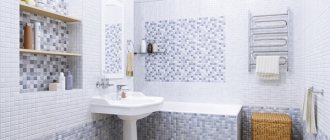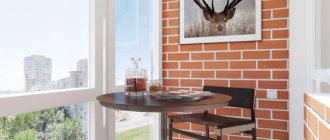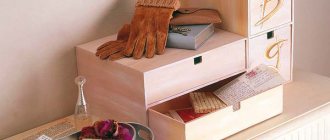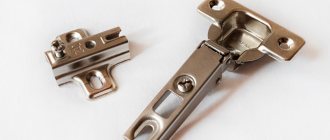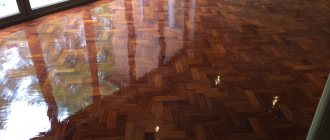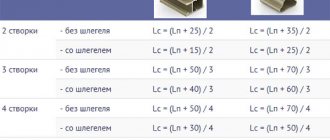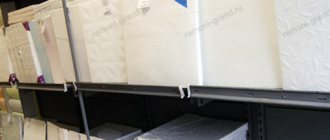DIY furniture finishing
Furniture of the 2nd class is veneered with hard hardwood. Veneering is not necessary for the internal surfaces of products.
After carpentry preparation, the surfaces are subjected to the so-called “finishing preparation”, which usually consists of the following operations: moistening, sanding off the pile, painting, wiping and priming, followed by wiping or sanding; After the operations of moistening, painting and priming (or masticating), the surfaces must be dried.
In some cases, some operations may be missing or their sequence may be changed. So, for example, sometimes they do not perform priming or combine it with painting, using colored primer compositions, or paint after priming, which, however, is undesirable, since in this case the dye solution does not penetrate into the wood at all - the coloring is superficial and fragile. In some cases, for example, when finishing furniture veneered with oak, if it is necessary to maintain a natural light tone, dyeing is eliminated, leaving other operations in the process.
The purpose of the operations is as follows.
When the surface is moistened, the smoothed pile (the thinnest cut fibers of wood) swells and rises; moistening is done with a rag swab or a piece of gauze moistened with water. Sometimes weak adhesive or varnish solutions are used instead of clean water. This gives better results, since the pile becomes more brittle after drying, which makes it easier to sand off.
As a result of the operations of moistening, drying and sanding the pile, the surface becomes smooth, which facilitates the application of subsequent coatings and allows them to be performed with higher quality. Dyeing is used either to equalize the overall tone of parts in one product, or to give the product the color required by the standard. Most often, the color of walnut or mahogany is imitated by dyeing. Following dyeing and drying, the wiping operation is used to remove remaining lint and excess dye deposited on the surface.
Rubbing is best done with horsehair, sea grass or wood shavings. In extreme cases, this operation can be performed with heavily worked fine-grained sandpaper.
The production of high-class furniture (as well as other classes) requires careful selection of wood in color and texture (with the exception of products with inlay, in which it is possible to combine different species in one product).
Masking or priming is used to compact the top layer of wood, filling the open pores of the wood, which reduces the ability of the varnish to be absorbed during subsequent polishing and, therefore, reduces the required number of varnish coats. In addition, the primer should increase the adhesion strength of the varnish film to the wood. Mastication is carried out, depending on the consistency and formulation of the primer or mastic, with a brush, rag, spatula or spray. When applied manually, the composition is rubbed into the pores, and excess is removed by subsequent wiping or grinding. Wiping is mostly done immediately after applying the composition; Sanding with sandpaper is carried out after drying.
The surface prepared in this way is coated with resin (alcohol), nitrocellulose or oil varnish.
The varnish can be applied with a brush, swab or by spraying.
A tampon for coating a surface with varnish is a ball of cotton wool or wool, wrapped in gauze or canvas. The tampon is impregnated with varnish and the latter is applied to the surface in merging stripes along the fibers.
With the brush method, a soft, usually flat, hair brush is used.
The spraying method consists of applying the varnish to the surface in a finely atomized form using compressed air, using special equipment for this purpose (see page 70). Currently this is one of the most productive methods.
The use of one or another method of applying coatings depends on the type of varnish. Alcohol varnishes are usually applied with a swab, less often in other ways. Nitrovarnishes are usually applied by spraying, less often with a brush or swab. The use of the last two methods when working with nitro varnishes is not recommended, since they are low-productivity and do not provide a sufficiently high quality finish.
Finishing with oil varnishes is usually done with a brush or by spraying. In furniture production, oil varnishes are not widely used due to the long drying time.
Coatings with oil, alcohol varnishes and nitro varnishes with the same average film thickness differ sharply from each other both in appearance and in film properties.
Oil varnish coatings are light and water resistant. The film is elastic and in a thick layer has a greasy sheen.
Finishing with nitro varnish is light and water resistant, and in terms of heat resistance it is superior to oil-varnish, but is less elastic and less weather resistant.
Coatings with alcohol varnishes, in particular shellac, have a good, soft shine, but have the following disadvantages: poor water resistance of the film, low hardness compared to nitro varnish, and lower heat resistance.
Under normal room operating conditions, shellac varnish finishes are quite durable.
To even out the color tone of one product, surfaces are painted with dye solutions. The concentration of dye solutions should not be significant to avoid veiling of the texture.
The appearance of any varnish coating depends mainly on the thickness of its film and the degree of its smoothness. An overly thick varnish film gives the surface a rough appearance; on the other hand, applying a very thin layer does not achieve the goal in cases where a continuous shiny coating is required.
Due to the wide variety of types of varnishes, their composition and properties, as well as application methods, it is not possible to recommend a standard number of coatings in all cases. For orientation, it is recommended to proceed from the following; General position: the higher the percentage of film-forming agents in the varnish, the greater the film thickness achieved in one coating. In this regard, oil and alcohol varnishes, containing 30-35% film-forming agents, come first. In nitro varnishes, the dry residue content is no more than 17-22%. Therefore, other things being equal, when applying alcohol and oil varnishes, the number of coatings should be less than when applying nitro varnish.
On the other hand, the thickness of the film formed on the surface also depends on the thickness of the layer applied at a time, i.e., on the application method.
When applied with a swab, the layer of varnish is much thinner than when applied with a brush and spray.
When applying varnish multiple times, the best results are obtained if you sand the film after each coat. Sanding the film after the first coating is mandatory in all cases.
Pre-treatment materials
Primers, mastics, putties
To level the treated surface, increase hardness and adhesion when applying subsequent coatings, primers, mastics, and putties can be used. Moreover, the same varnish diluted with an appropriate solvent can be used as a primer. Mastics themselves have tinting properties, but when using putties, the most difficult task is to choose the color. As a rule, the sample is first puttyed and then varnished, and after the varnish has dried, a decision is made: use this putty or look for another.
Pore fillers
Nowadays, fillers are receiving more and more attention in wood processing. They are used to create a more uniform density of wood, prevent sagging of the varnish film and the absorption of varnish into the wood. Porosity fillers can be either colorless or tinted.
Pore fillers also include various types of impregnations. Impregnations, in turn, are divided into oil and wax. Oil impregnations are made on the basis of vegetable oils, linseed or hemp. Drying oil (boiled oil) can also be used to impregnate wood. Treatment of wood with paraffin can also be considered as treatment with foam filler.
Bleaches
Various types of bleaching agents are used both to lighten or even out color, and to remove resin or dirty stains from the surface of wood.
Dyes, stains, mordants
They are used to enhance or change the natural color of wood, usually to imitate valuable species.
Requirements for the quality of furniture finishing class 2
Depending on the finishing method and type of varnish, coatings must meet the following conditions:
- The coating should be uniformly shiny (silky or matte shine). Matte shine is achieved by treating varnished surfaces with abrasive materials.
- The color of the coating should be even: there should be no spots or stripes.
- Drips of varnish, brush strokes, uneven film thickness, bubbles, bumps (shagreen), whitening, gripping and similar defects are not allowed.
4. The color of the coating must correspond to the standard accepted for this type of product. The film must be firmly held by the wood (not peel off when tested with a knife blade). office furniture repair
Furniture finishing 1st class
Furniture of the 1st class, veneered with hardwood, is finished by polishing or varnishing, followed by polishing. Internal surfaces are veneered with hardwood.
Carpentry and finishing preparation of furniture products of the 1st class must be carried out especially carefully. The slightest irregularities and flaws, not noticeable on a matte, unfinished surface, subsequently, with a mirror finish by polishing, become clearly visible and spoil the appearance of the coating. Polishing with shellac polish is most often used for furniture of this class.
Polishing with shellac polish. The polishing process consists of applying many thin layers of shellac polish to the surface using a polishing pad. Polishing is performed in two, three (sometimes more) operations with long periods of time between them to allow the applied coating to dry thoroughly and ensure the stability of its mirror-like appearance.
The first operation - creating soil - is carried out using oil and pumice to fill the pores (sometimes oil is not used; although this makes the work somewhat more difficult, it gives better results).
After curing for at least three days, the first layer is usually carefully sanded with sandpaper or the so-called pumice-wax composition, then the following coatings are applied - the second and third, called polishing itself. The final treatment is carried out with a swab moistened with alcohol. The operation is called “drying”.
After applying the polish three times and subsequent drying, the products acquire a mirror shine. To enhance shine, sometimes the surface is treated with gasoline, as well as a mixture of ether with alcohol and incense—the so-called “cherchik”—or only a mixture of ether and alcohol, or a mixture of alcohol and vaseline oil.
If a matte polish is required, the mirror surface is matted with a grinding compound or fine-grained sandpaper with oil.
Products are usually finished in units and plants, so preliminary assembly, disassembly and marking of product parts before polishing are required.
The shine of polished surfaces, especially in places of “grabs” that are inevitable during the assembly process, fades somewhat, so to restore it, the assembled product is treated with liquid polish or alcohol using a swab in one or two passes. This additional operation is called "refreshing".
For finishing furniture of the 1st class, two- and three-time polishing is allowed, followed by drying with alcohol or matting the glossy surface by processing with appropriate grinding materials.
When finishing with a tampon, shellac polish is used - bleached or regular. Bleached polish is used for finishing furniture made of lightly colored wood (pear, lemon) - while preserving the natural color of the wood.
Before polishing, preliminary treatment of surfaces with drying oil (polishing) is allowed; It should be borne in mind that drying oil somewhat changes the natural color of the wood, but the texture pattern acquires special expressiveness or, as they say, play. The polishing process takes a long time and is performed by highly skilled workers.
Polishing with nitro varnish. The essence of the process is that the product is coated with a fairly thick layer of nitro varnish 4-8 or more times, depending on the porosity of the wood (usually by spraying), using intermediate sanding. Then the coating is carefully ground and polished with pastes. To give a matte shine, additional surface treatment is used with fine-grained sandpaper or pumice powder with water, 14
This finish does not require expensive shellac; the coating is highly durable. With the introduction of mechanized grinding, this type of finishing should take one of the first places both in terms of coating quality and high labor productivity.
Combined finish. Some industries use mixed or, as they say, combined finishing.
In this case, the products are coated with nitro varnish 4-8 times (depending on the porosity of the wood), the applied coating is leveled by sanding and polished with shellac polish in one or two times.
The surface of a nitro varnish coating before polishing can also be leveled with a swab moistened with a solvent or a mixture of solvent and alcohol. It is better to carry out polishing one to two hours after varnishing, since with longer exposure the nitro-varnish film can be processed with great difficulty.
It should be noted that leveling the surface with a tampon gives significantly worse results compared to grinding.
Experimental work by the Central Design Bureau of Glavmebelprom established the possibility of combining coatings with nitro varnish and alcohol varnish, applied by spraying, followed by polishing with polishes. In this case, the following option can be recommended: nitro varnish is used as a primer, applied 3-4 times with intermediate sanding; subsequent coatings are carried out with alcohol varnish by spraying, after which the surface is ground and polished with a polish.
In terms of the strength of the coating film, this type of combined finishing does not differ from conventional finishing with shellac varnishes, but its advantage over purely nitro-varnish finishing is the reduction in the number of coatings due to the larger percentage of film-forming agents in the alcohol varnish. On the other hand, a durable nitro-varnish base provides greater stability of coatings (in the sense of “drawdown”). In addition, the top coat of shellac varnish is easier to polish with polish.
Leveling. The essence of the process is that alcohol varnish or nitro varnish is applied to the surface in one way or another and the resulting coating is then leveled by treating with a solvent using a tampon.
Finishing by leveling is significantly inferior in appearance to polishing. The surface in this case has a semi-mirror shine, but unlike polishing, the final operations are performed with less labor.
Leveling can be done using alcohol varnish or nitro varnish. Alcohol varnish for such finishing is applied with a swab, brush or by spraying; Nitrovarnish is applied by spraying. Leveling can be done with a swab soaked in alcohol or solvent.
The internal surfaces of 1st class furniture products are finished using simplified technology. Typically, priming with drying oil and single or double varnish are used.
Furniture decoration is simple and beautiful
A great way to refresh the interior and give the furniture uniqueness and sophistication is to decorate the furniture . Moreover, all the work can be done with your own hands.
Although, if you wish, you can entrust the decoration of furniture to professionals and do Ultraviolet printing on furniture, thanks to modern technologies, applying bright original images to any furniture made from a wide variety of materials. Decorating furniture like this in your home will add a unique charm to your interior design.
And for those who like to do everything with their own hands, there are options for decorating furniture yourself. For this, various artistic techniques are used. A very popular technique is decoupage. Using thin napkins, picturesque drawings and patterns are transferred to the surface of the furniture.
Another option is to decorate “antique” - ordinary furniture acquires the nobility of antique furniture. Decorating antique furniture is quite simple.
For example, the crackle effect (that is, spreading paint) can be achieved using paints of two colors and craquelure varnish. First, the surface to be decorated is covered with a water-based primer, then it is covered with paint. As soon as the varnish has dried, craquelure varnish is applied to the surface with a brush. You need to cover the surface with varnish in an even layer by moving the brush in one direction. After 45 min. a layer of a different color is applied in the direction in which the varnish was applied to the surface.
When decorating furniture, you can use the effect of gilded antique mirror frames. This method is very simple. The mirror is attached to a sheet of plywood having a size slightly larger than the mirror itself, after which the artificial flowers are covered with golden spray paint, an openwork frame is made around the mirror, and the flowers are attached to the plywood. Ready!
If you are a lover of original furniture, then furniture fittings will help you with this. futnitura-VIP online store
You can also decorate furniture using fabric, painting, burning or wrapping paper with decorative patterns. Decorating furniture with painting is even easier than previous options. To paint on furniture, they use decorative stencils - thanks to them, true masterpieces are created.
If the upholstered furniture is outdated, you can use a new cover or decorative pillows for decoration.
The main thing is to show imagination and not be afraid to experiment, and decorating furniture will not seem so difficult to you.
Please click on the social media buttons. Perhaps your friends on the Network will also want to know how easy it is to decorate furniture with your own hands.
Requirements for the quality of furniture finishing class 1
- The coating should have a uniform mirror or matte shine over the entire surface.
- The coating film must have strong adhesion to the wood and not peel off when tested with a knife blade.
3. The coating must be lightfast and not noticeably change its color when the product is exposed to direct sunlight for several days.
- The coating should not be deformed or destroyed by temperature fluctuations up to +60°.
- “Burn through” of the film, stripes and stains, clouding, uneven color, uneven gloss, unpolished areas, various types of scratches and mesh, open pores and other possible defects that spoil the appearance of the coating are not allowed.
Upholstered furniture sets
Patterned sofas can add an element of surprise to a room, as shown in the photo below. Notice how boldly the brightly colored ottoman is used, positioned in the middle of the room, paving the way for accompanying models with similar zigzag motifs.
The choice of fabric for the upholstery of this sofa is excellent, especially in combination with the bright color of the wall. The design of the sofa is very comfortable, wooden legs add reliability to it, and patterned linen fabric adds coziness.
Gray tones give modern fabric a beautiful, timeless look, as shown in the photo below. When upholstering this sofa, you can use fabrics with a variety of patterns, but you need to stick to the classic color scheme. Wooden built-in legs create a floating effect that puts a special emphasis on coziness.
For an updated look in your living room, consider using traditional patterns (like a floral pattern) on stained wood furniture. The striking look of the sofa is enhanced by the bright pink legs.
If you really love patterns and ornaments, complement a sofa upholstered in floral fabric, curtains with a similar pattern and a vase with fresh, bright flowers.
